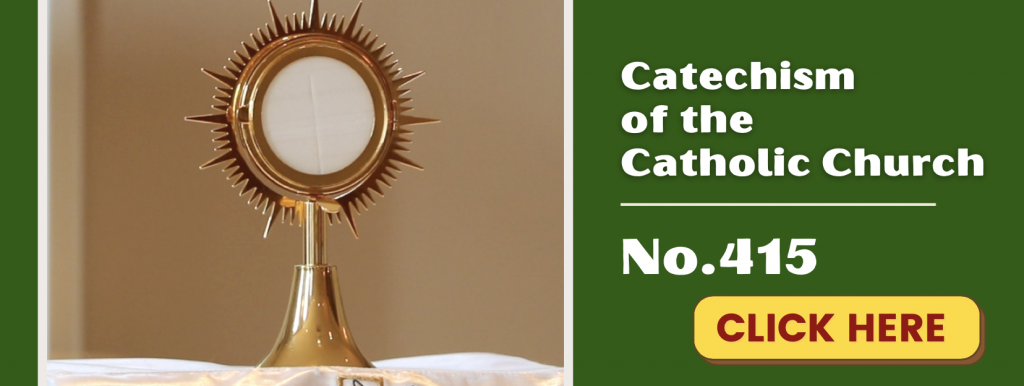Feast of Saint Mary Magdalene



“For greater things you were born.” (Ven. Mother Luisita)
THURSDAY, July 22nd Jn. 20: 1-2, 11-18 “On the first day of the week, Mary Magdalene came to the tomb early in the morning, while it was still dark, and saw the stone removed from the tomb. Mary stayed outside the tomb weeping.”
- Mary Magdalene has something in common with all the saints – an intense love for Jesus! A yearning to be with Him, to love Him, and to serve Him!
- In our meditation today, let us look at some of the saints in their great variety and in their similarities, and prayerfully consider what kind of saint God is calling each one of us to become!
CHURCH TRIUMPHANT: 10 INSIGHTS INTO THE SAINTS by Fr. Ed Broom, OMV
Every year, the Church joyfully celebrates the Feast of All Saints. A classical ecclesiastical model divides the Church into three parts, but all belonging to the same family of God: the Church Triumphant, the saints in heaven, the Church Militant, those living soldiers on earth, fighting for their salvation, and finally, the Church Suffering—the souls in Purgatory, already saints but in need of purification to attain Heaven.
This meditation will focus on the Church Triumphant—the saints in heaven who have victoriously triumphed over their three primary enemies—the devil and his lies, the world and its seductions, and the flesh and its imperious disordered cravings!
Following are ten insights into the most captivating, heroic, appealing, joyful, tremendous people that walked on planet earth and now are permanent residents in heaven: God’s friends, but also your friends and mine—the saints!
1. Saints Are Not Born Saints
A somewhat prevalent error is to believe that the saints were actually born saints. Nothing could be further from the truth. All saints are conceived and born with Original Sin, with tendencies or inclinations that they must overcome and dominate relying not on their own efforts alone, but especially on the grace of God.
Actually, quite a few of the great saints lived very sinful past lives before their conversion, to name a few: the Good thief, Mary Magdalene, St. Augustine, St. Ignatius of Loyola, St. Mary of Egypt, and St. Margaret of Cortona—known as the “Second Magdalene”.
2. You Are Called to Be a Saint
Often when teaching Confirmation, I will ask the students how many of them want to become saints. More often than not, nobody will raise their hand. Next I ask them how many want to avoid hell and go to heaven; now all their hands go up. Then I go on to explain that in heaven we have our Triune-God (The Blessed Trinity), the Blessed Virgin Mary, the angels and the saints. So, for you to go to heaven you have to become a saint!
3. Jesus Commands Us to Be Saints
Listen to the words of Our Lord and Savior Jesus Christ, who is our model, especially in holiness of life: “Be holy as your heavenly Father is holy.” (Mt. 5:48) Grammatically, the tense is imperative, which means that this is a command from God Himself.
If God commands us to do something, He will give us sufficient grace to carry it out! God never commands the impossible, but always gives us the graces needed. As Jesus said to Saint Paul: “My grace is sufficient for you, for my power is made perfect in weakness.” (2 Cor. 12:9)
Saint Mother Teresa of Calcutta expressed this truth succinctly: “Sanctity is not the privilege of the few, but the duty of all.” The Dogmatic Constitution on the Church, Lumen Gentium, Chapter V, is “The Universal Call to Holiness.” This is a must read for all who truly desire to become saints—check it out!
4. Saints Come From All Over
Sanctity is not limited to one time, place, culture or ethnic group. Sanctity is open to all; rather, sanctity is commanded by Jesus for all.
Leaf through an anthology of saints and you will find the most diverse backgrounds and experiences. Some are nuns; others are priests, Bishops or Popes. Still others are married couples, as in the case of the parents of St. Therese of Lisieux — Saints Louis and Zelie Martin. Still other saints have embraced the single lay vocation like St. Giuseppe Moscati and Bl. Giorgio Frascati.
Some died very young — Dominic Savio, age 14, and Maria Goretti, 11 years of age. Francisco and Jacinta Marto are two of the youngest saints—he died at age 10 and she died at age 9. Then there are those who lived long lives—Saint Alphonsus lived into his nineties. Saint Anthony of the desert, as well as St. John the Evangelist, lived into their hundreds. Some died of sicknesses, many died as martyrs.
Sanctity cuts across and transcends time, place, culture, gender, intellectual formation or lack of it. All are called to become saints and all are given the grace!
5. Church Triumphant
The saints can be classified as being in the Church Triumphant. They have fought the good fight, run the good race, and now they are in heaven, victoriously crowned by God for having conquered sin in their lives and for having relied on and trusted in God’s Infinite grace and His fathomless Mercy. Jesus said to Saint Faustina that the worst sinners can become the greatest saints if they simply trust in God’s Infinite Mercy!
We celebrate their feast day every year November 1st—The Solemnity of All Saints!
6. The Saints & Their Help to Us
The saints can help us in many ways. However, two aspects of their presence can help us beyond measure. First, their power of Intercession! The saints can intercede for us before the throne of God and attain from God the necessary graces to help us avoid sin and practice virtue so that we can arrive at where they are now—the Kingdom of Heaven, the House of the Eternal Father. Second, the saints leave us from their lives a powerful example that we are challenged to imitate in our own lives.
Holy examples have an appeal and attraction that draw us almost like a magnetic pull! How often have saints been inspired by saints who lived before them, to follow on the demanding pathway of holiness? A perfect example is Saint Ignatius of Loyola who while recovering from being shot in the legs by a cannon ball in the Battle of Pamplona started to read the lives of the saints. He broke out in an enthusiastic cry: “If Francis can do it, so can I!” Then, “If Dominic can do it, then so can I.” Saint Ignatius of Loyola was inspired to become a great saint by reading of the lives of holy men and women of God who lived before him.
7. Read the Lives of the Saints
It can be an enormous stimulus and motivation for all of us to read the lives of the saints. This will fuel our engines and give us abundant food for thought on the path we must undertake to arrive at heroic virtue and holiness and to become the saints that God is calling us to become!
Why not buy the life of a saint that appeals to you or a text that has a short summary of various lives of the saints and read a few minutes before retiring for the night?
8. Qualities of the Saints
When the Holy Father officially canonizes a saint, after the required miracles, the Pope is stating that this person practiced heroic virtue. Despite Original Sin and possibly a sinful past, the saint has decided to give up sin and fight against it. But more importantly, the saint has decided, with the help of God’s grace, to practice virtue, better yet heroic virtue.
This means that he practices virtue in his daily life constantly; not by fits and starts or only when he feels like it. No! There is a constant living out of heroic virtue, the practice of virtues that reflect sanctity of life.
9. Joy & the Saints
One of the most evident signs of the presence of God in our lives is that of Joy. Saint Paul, in his letter to the Philippians, exhorts us with these words: “Rejoice in the Lord, I tell you again: rejoice in the Lord.” (Phil 4:4) The saints are filled with the Holy Spirit and are overflowing with an effusive Joy. Joy is one of the most clear and evident fruits of the Holy Spirit active and operative in the lives of the saints.
10. Our Lady, Queen of All the Saints
Our Lady is the Queen of all of the saints. Our Lady is the most holy and the greatest of the saints. It is very difficult to find any saint who did not have a tender, loving, fervent and ardent love and devotion to Our Lady. Her prayers and example have motivated many men and women to pursue the path of holiness. For that reason we call out: “Holy Mary, Mother of God, pray for us sinners, now and at the hour of our death. Amen.”
May Our Lady’s prayers encourage you to become a great saint, starting right now!